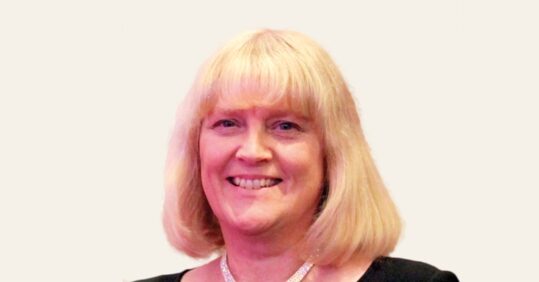What it’s like to be a Covid-19 contact tracer

Prior to Covid-19 arriving in the UK, I was working as a project manager undertaking research – and now unexpectedly find myself working as a contact tracer on the NHS Test and Trace programme.
I am a district nurse and Queen’s Nurse with over 30 years’ experience and left the NHS five years ago. However, I wanted to contribute in some small way to fight this awful virus.
How being a contract tracer works
Related Article: NHS plan delivery must equip and empower nurses, midwives and nursing associates
In recent weeks, thousands of contract tracers have been hired by the Government. The contact tracing system service is delivered across three tiers:
- Tier 3: Phone and script-based contract tracing where any difficult issues are referred to Tier 2. Only low risk contacts are contacted by Tier 3.
- Tier 2: Phone-based contact tracing, which also includes risk assessment follow-up and management of cases, contacts and situations. Referrals can be made to Tier 1.
- Tier 1: Risk assessment and management of more complex cases.
Working in Tier 2 as an NHS professional, I am responsible for phoning people who have received a positive coronavirus test result to identify all their contacts and activities.
Once a person tests positive for Covid-19, they will receive a text, email alert or phone call from NHS Test and Trace within 24 hours. This will provide instructions of how to share details of the people they have been in close, recent contact with – including family or other people they live with, as well as people they have been in direct contact with, or within two metres of, for more than 15 minutes. They will also need to disclose places they have recently visited. Those testing positive must complete the entire 7-day period of self-isolation, while members of their household must complete a 14-day isolation period, from when the positive tested person first showed symptoms.
When I call a positive tested person on the phone via NHS Test and Trace, the service uses a single phone number: 0300 013 5000 and all the information provided to the service is held in strict confidence and will only be kept and used in line with the Data Protection Act 2018. The contact tracing team uses the information provided, along with online services and local public health experts, to identify the individuals they have had close contact with and alert those most at risk of having the virus that they need to self-isolate.
The training to be a contact tracer
Related Article: NMC seeks nursing leader to oversee Code and revalidation reviews
Training involved reading a large amount of information from Public Health England, including 28 pieces of e-Learning, videos that guided me through the system, and modules with assessments including Information Governance, Safeguarding of Children and Safeguarding of Adults. There were also webinars to access to further learning.
The training also includes practice scenarios, including situations to escalate to Tier 1 for tracing and management. For example, if I spoke to a Covid-19 positive person who had recently entered the country on a flight, I would gather their flight details and escalate up to Tier 1. Other examples that must be escalated include people have attended a day care centre for older or vulnerable people, care homes, schools, nurseries and prisons.
This new way of working has been quite challenging. Once I had my application accepted, I had many emails with instructions on how to download and access Amazon Work Space, more emails with passwords and passcodes for Contact Tracing and Advisory Service, Synergy, Sitel and Ring Central – all these systems integrate and are needed to be in place before I could start tracing. It was quite overwhelming at first to be using so many access codes, registration codes, passwords and usernames – all different details for each system and then changing all the information given once I was in the system to passwords of my choice.
Thankfully, I became aware of a small Queen’s Nurse WhatsApp group also working as contact tracers and going through the maze of accessing the systems like me. This group have been a lifeline to connect with. We problem-solve and support each other whilst we all get used to working from home and in isolation from other team members.
Related Article: Tell us what practice nursing means to you and potentially win £1,000
My many years of clinical experience as a nurse have definitely been beneficial to taking on this new role. When phoning a person with coronavirus, I introduce myself as a nurse and ask how they are doing. If they need extra support, I can signpost them to the appropriate organisation as all the details are on the screen in front of me. Reflecting during the last few weeks on some of the frustrations and complications in accessing the systems, I am acutely aware that these structures need to be secure as we are handling peoples’ private information and data.
As we continue to wrestle with this disease. I am looking forward to working with the NHS Test and Trace programme over the next few months. I hope that any potential infections will be tested and traced in a timely way in order for new transmissions to be isolated quickly and allow the vast majority of the population to be able to get on with their lives in a more normal way.

See how our symptom tool can help you make better sense of patient presentations
Click here to search a symptom


Prior to Covid-19 arriving in the UK, I was working as a project manager undertaking research – and now unexpectedly find myself working on the NHS Test and Trace programme.



